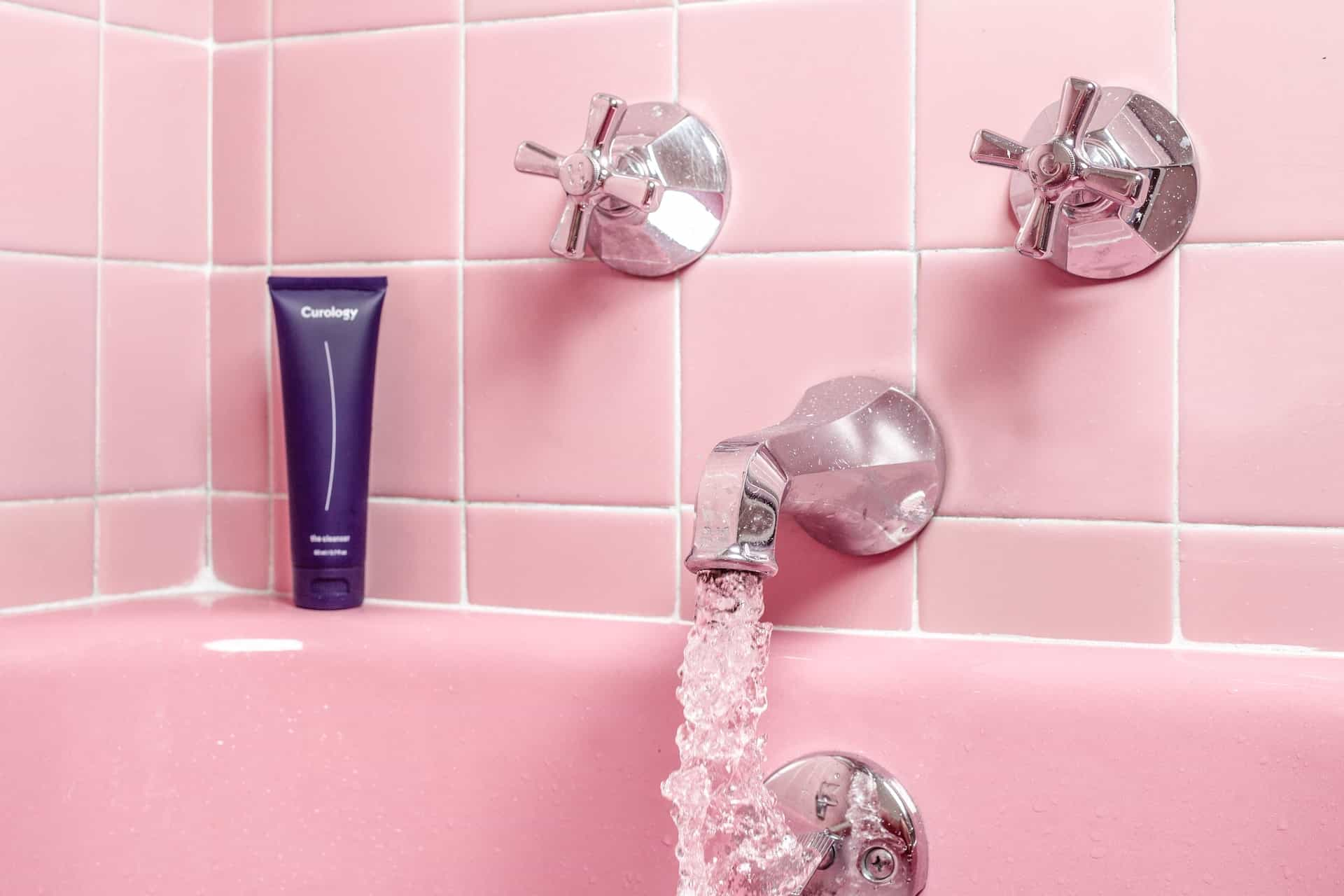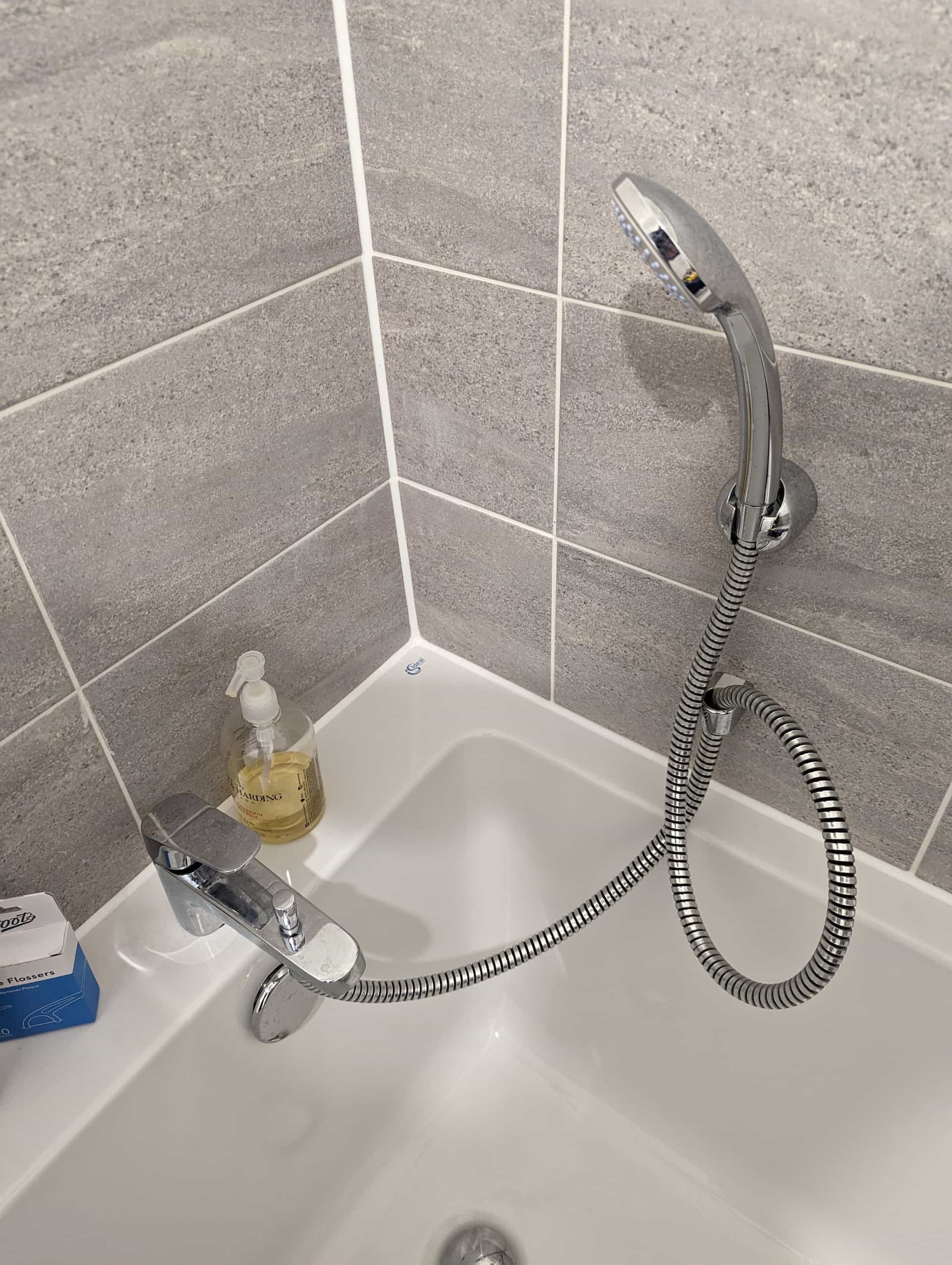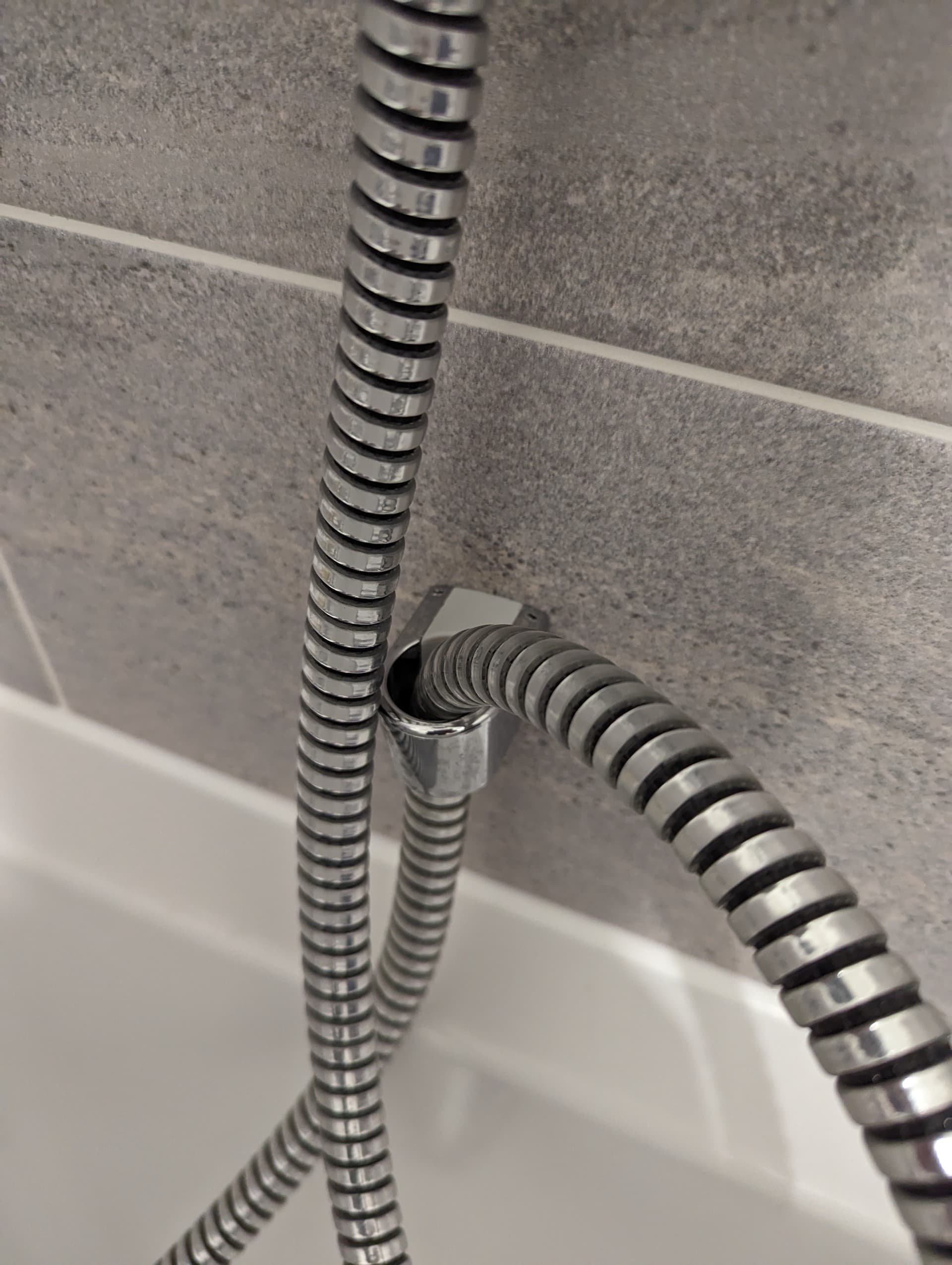I tried to replace my shower hose
How wanting to replace a shower hose lead me down a rabbit hole that ended with me not wanting to replace the shower hose. And also an epiphany about the computer systems I build.

Normally you’d read something computing related, and here you are, about to read words I penned about some bathroom appliance. It will make sense, I promise, or your money back!
Let’s start with the problem. In one of the bathrooms, there’s a shower hose that I absolutely hate. It was there when I moved in. It’s stiff, fixed to the wall, and not quite long enough to reach the back of the bathtub it’s attached to.

My initial idea was simple: unscrew the hose at the tap, feed the hose through the loop, unscrew it from the shower head, put new hose through the loop, screw it back on, and done. Better hose, more comfortable use, everyone’s happy.
Except the hose does not fit through the loop. The main body of it, the long slinky bit does, but none of the screws at either end can go through it. The ends can’t be removed, and I couldn’t find an obvious way to remove the loop from the wall. I let that be for a few months.
A few days ago my hatred for the current hose reached the level where I actually started looking into how to remove that loop, or what to do with it. This loop:

I started looking for a screw: there were none. Maybe it was clicked into place, so I could get a screwdriver, pry one end open, and it would give way? Nope.
I then went looking at what this might be. After about 10-15 minutes of rewording search queries and looking at images in the search results, I found out what exactly this is. My thinking was that if I know how it was put on, I can reverse engineer how to take it off. These things always have a manual online, or installation guide, or something.
It is the beautifully named B1364AA category 5 hose retainer by Ideal Standard. Ideal Standard being the brand. While hunting for the installation manual, I came across this bit:
UK water regulations and EN 1717 require the prevention of backflow or back siphonage of contaminated fluids into the drinking water supply. The greatest risk are fluids found in WCs and bidets, hospital wetrooms and kitchen sinks, which are classed as fluid category 5. The risk posed by class 5 fluids means mechanical hydraulic protection devices are not permitted, and only physical air gaps are accepted. Our innovative solution is a shower hose retainer which physically ensures an adequate air gap at all times.
- Prevents back siphonage
- Suitable for all fluids inc category 5
- Maintains an air gap
- Ensures compliance with water regulations
- Requires destruction to remove once fitted
- Wall bracket and slide rail versions
Somewhere there it also said that you can’t remove the retainer without destroying it in the process. So there goes my wish to replace the hose.
However I have learned something new. Because the same bathroom also has a toilet in it, that retainer bit suddenly makes sense. See “air gap” in the above description just means “the hose is too short to reach the toilet, you literally can not dunk the shower head into the toilet bowl”.
Turns out what UK regulation EN1717 does is to keep people from introducing water you shouldn’t be drinking into water that you could be drinking. If I could dunk the shower head into the toilet bowl such that it would get some water into it, then lifted the shower head above the tap, the contaminated water would flow back, and suddenly poopy water is everywhere not just in my house, but in every house on the same pipe network. That is an undesirable outcome for obvious reasons.
Your next thought is “yeah, who’d be dumb enough to dunk the shower head into the toilet bowl?”
Excellent question.
People with limited mobility, people who got frightened and threw the shower head somewhere and it accidentally landed in the toilet, people who are just plain assholes, kids who have no concept of adhering to anything their parents tell them because they’re gonna do those things even harder!
The point is that the system should be built in such a way that no matter what happens, unless there’s deliberate destruction, the bad thing can’t happen accidentally!!
Okay, back to computing.
Are your systems / components / whatevers built in such a way that unless many things happen purposefully, the bad thing can’t happen?
Also, are you up to date of the regulations and why they are in place?
P.S.: the underlying reason is the same for why some older British buildings have separate hot and cold taps. Click to see Tom Scott on YouTube explaining the hot/cold separate tap thing.
